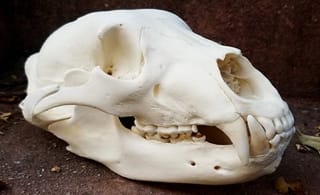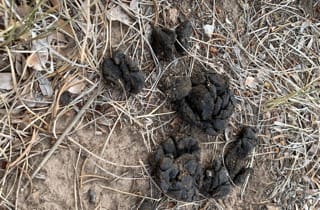This guide initially displays common tracks of all shapes. Use the selectors below to view particular shapes, include rare species, or search by name.
Anything that moves over the ground leaves some sort of marking of its passage. In particular, footprints left behind in soil, snow, mud, or other ground surfaces provide a means of recognizing different species. The illustrations and characteristics listed below highlight key features that can be used to identify the tracks of many of the animals in the area.
Track References
Alderness Wilderness College
Animal Track ID [PDF]
Beartracker
Deerdance
Elbroch, Mark, 2003 Mammal Tracks and Signs: A Guide to North American Species
eNature
Gaits
Lowery, James, 2013 Tracker’s Field Guide. Falcon Guides
Nature Tracking
North Woods Guides
Outdoor Action
Subject Area Experts (all guides)
Steve Cary (butterflies)
Beth Cortright (insects)
Terry Foxx (invasive plants)
Leslie Hansen (mammals)
Richard Hansen (fish, mammals)
Dorothy Hoard (butterflies, trees)
Chick Keller (flowers, herbarium)
Shari Kelley (geology)
Kirt Kempter (geology)
Garth Tietjen (reptiles)
David Yeamans (birds)
Web Development and Content Management
Pat Bacha
Jennifer Macke
Graham Mark
Akkana Peck
Contact
Please contact us for local nature questions and sightings. We welcome comments, corrections, and additions to our guides.
For more information about local nature, please visit our Nature Blog or subscribe to PEEC This Week.
Make Selection
 Drawn based upon US Geological Society image  Photo: Katie Collins  Photo: Jennifer Macke |  Black Bear(Ursus americanus)Family: Uridsae (Bears) Gait: gallop, overstep walk Form: large claws; round toes Front Foot: 5 toes; 2.1 in (5.3 cm) - 5.3 in (13.5 cm) Hind Foot: 5 toes; 2.8 in (7.1 cm) - 8.0 in (20.3 cm) The heel pads on both the front and hind paws may or may not register. The marks from the inside toes often register deeper than the others. Black bear scat is typically a pile of amorphous matter. Due to the variety of a bear's diet, it can appear as a thick cord with blunt ends. Mammal Guide - Bear |
